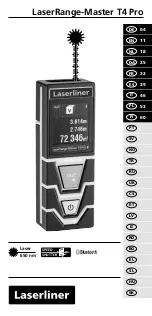
D. Glossary
FLIR Detection
Decay
The process by which an unstable
(parent) loses energy by emitting
Ú
and transforming to another nuclide (daughter). Decay of a single nuclide is spon-
taneous, that is, it neither needs external triggering nor is it predictable. The average decay
rate of a large number of nuclides, however, is predictable and usually given as
Also known as:
Disintegration, Radioactive Decay
Deutsches Institut für Normung
(DIN)
The German national organization for standardization, represents Germany in the
Ú
.
DHS
Department of Homeland Security (USA)
Dial-Up Networking (DUN)
A
communications pro ile to access the Internet or other dial-up services.
DIN
Ú
Deutsches Institut für Normung
Dirty Bomb
Ú
Radiological Dispersion Device
Disintegration
Ú
DNDO
Domestic Nuclear Detection Of ice of the
(USA)
Dose
A measure of the
Ú
energy transfer to, for example, tissue (
Ú
Dose Rate
The quotient of
given in
Ú
and time.
DT
Ú
DUN
Ú
Electromagnetic Radiation
Self-propagating waves comprising electric and magnetic ield components. The
ranges from low-frequent radio waves (longer waves), microwaves, visible light, ultraviolet
radiation, X-rays up to high-frequent
Ú
Gamma Radiation
(shorter waves).
Electron
A subatomic particle with a negative electric charge, counterpart of the
. It is emit-
ted as
Electron Volt (eV)
The electron volt is a non-
Ú
unit of energy (
) employed in radiation physics. It is
equal to the amount of kinetic energy gained by a single unbound electron when it accelerates
through an electrostatic potential difference of one volt.
1 eV ≈ 1.602177 × 10
J
272
identiFINDER
®
R300/en/2014.4(13623)/Feb2015
















































